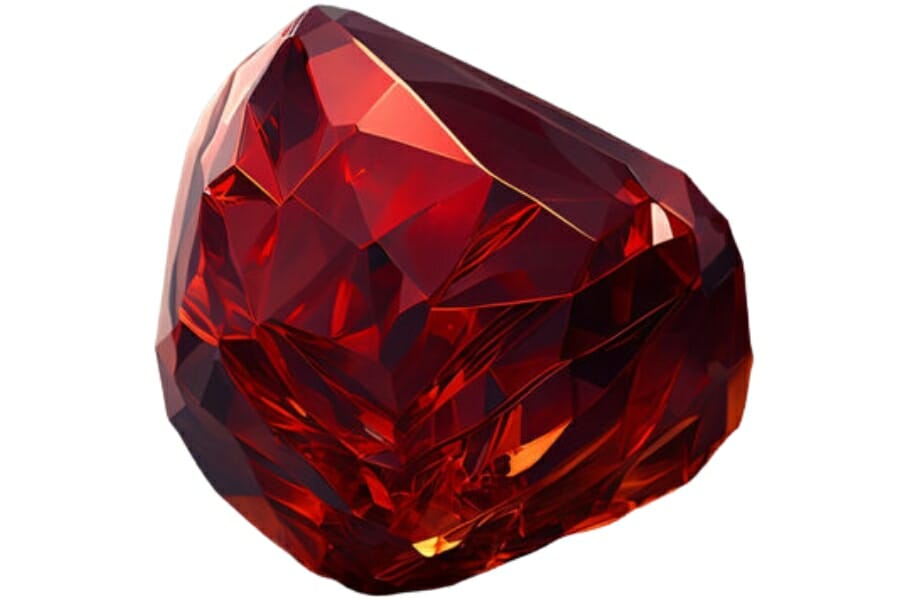Red diamonds and rubies are fascinating gemstones with a crimson glow that has drawn people to them for centuries. Even though the colors of these gems are similar, there are a lot of things that make them different from each other.
It’s not just about how beautiful and rare they are but also about how interestingly different the natural world is. Gemologists and gemstone lovers can tell that each of these red wonders is unique by looking at them through the lens of science and admiration.
Exploring red diamonds and rubies tells a story of geological wonder. It shows how different conditions and elements can make gemstones look similar in color but very different in other ways.
Sometimes, it can be hard to tell the difference between them, and that’s what this article is about. We will explore and compare these two gems so you can tell them apart by the end!
Even though they are different in many ways, red diamonds and rubies are highly valued for their beauty and rarity.
Red Diamond vs. Ruby – The Major Differences
First, we’ll talk about how they are different. They also have some things in common, but these are the most important characteristics when comparing them.
Chemical Composition – Rubies are made up of aluminum oxide
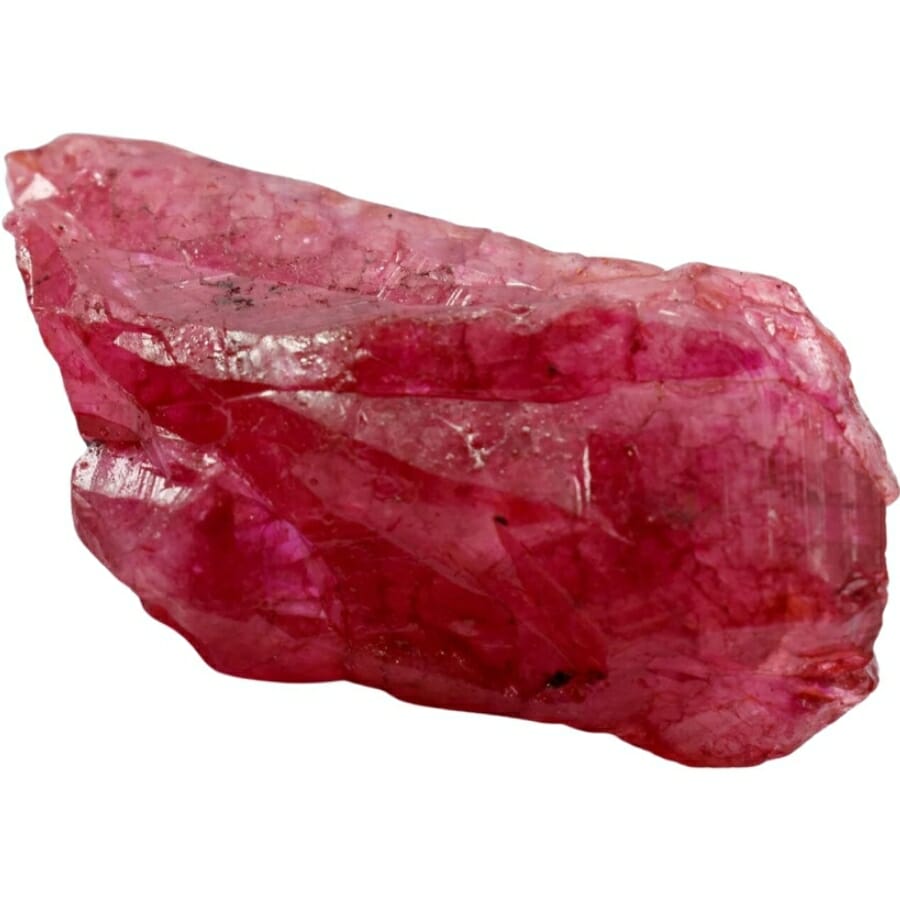
Red diamonds and rubies may look similar because they are both red, but their chemical composition, which is what they are made of, is very different. Let’s look at each of them more closely to see how they differ.
Carbon is the central part of a red diamond. This means that a red diamond is mainly made of carbon, arranged in a crystal lattice pattern.
Now, the red color of red diamonds is a bit of a mystery, but scientists think it might come from changes in the structure of the diamond or from tiny amounts of other elements mixed in with the carbon.
On the other hand, rubies have a completely different recipe. They are made of something called aluminum oxide. This mixture usually has no color, but when a small amount of chromium gets into the aluminum oxide, it turns the gem red, creating a ruby. So, it’s the chromium that gives rubies their beautiful red color.
Even though both red diamonds and rubies are beautiful, they are made up of different parts. These natural recipes make them look different but also change how they act and how much they are worth. Next time you see a red gem, you’ll know there’s a lot more to it than meets the eye!
Cleavage – Red Diamonds have perfect cleavage
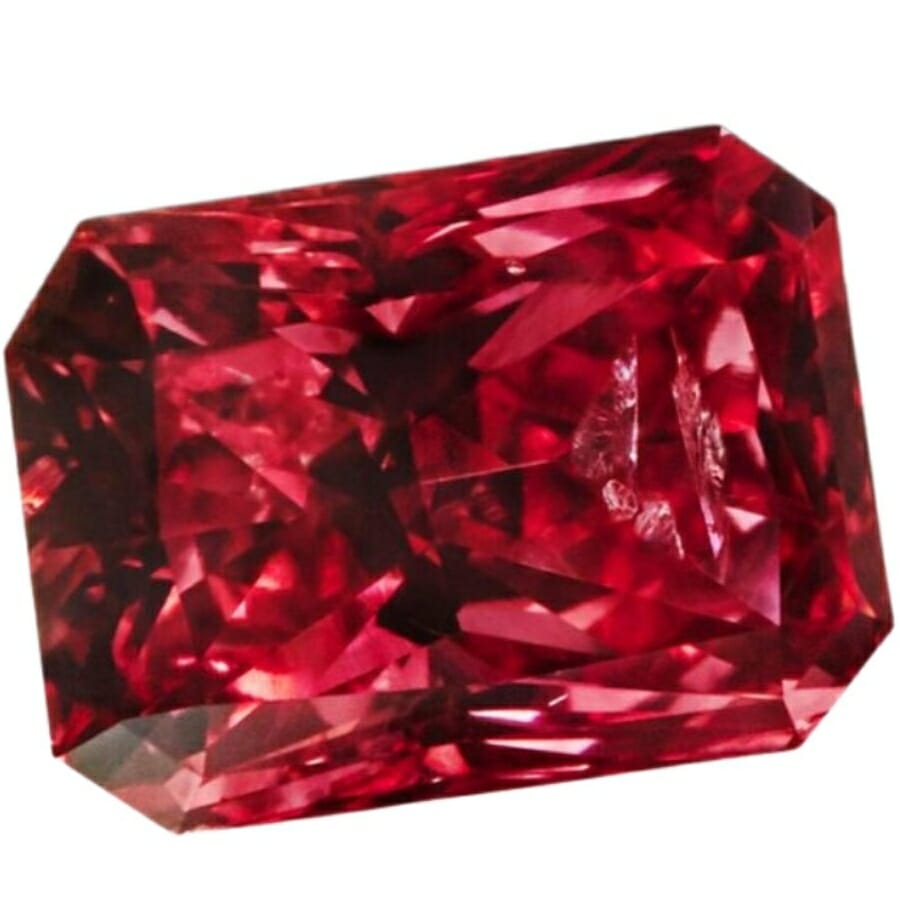
Gemologists use “cleavage” to describe how a mineral breaks when cut or hit. Think about hitting a block of chocolate with a hammer. Cleavage happens when minerals break into nice, even pieces along straight lines. Now, let’s look at how the cleavage of red diamonds and rubies differs.
The cut of a red diamond is called “perfect cleavage.” This means that when a red diamond is cut or hit, it breaks along very clear, flat planes. This makes it easy for gem cutters to know how it will break.
Red diamonds have cleavage that goes in four directions. They can break in four ways, creating smooth, flat surfaces. This is something that all diamonds have, not just red ones.
Rubies are a different story. They don’t have cleavage like red diamonds do. When you try to cut or hit a ruby, it doesn’t break into neat, flat pieces like a diamond does.
Instead, it might fracture, which means it breaks in a less planned and more random way, making the surface uneven. This is because the atoms in rubies are packed together in a way that doesn’t have natural breaking points like diamonds.
Conductivity – Rubies are not good conductors of heat
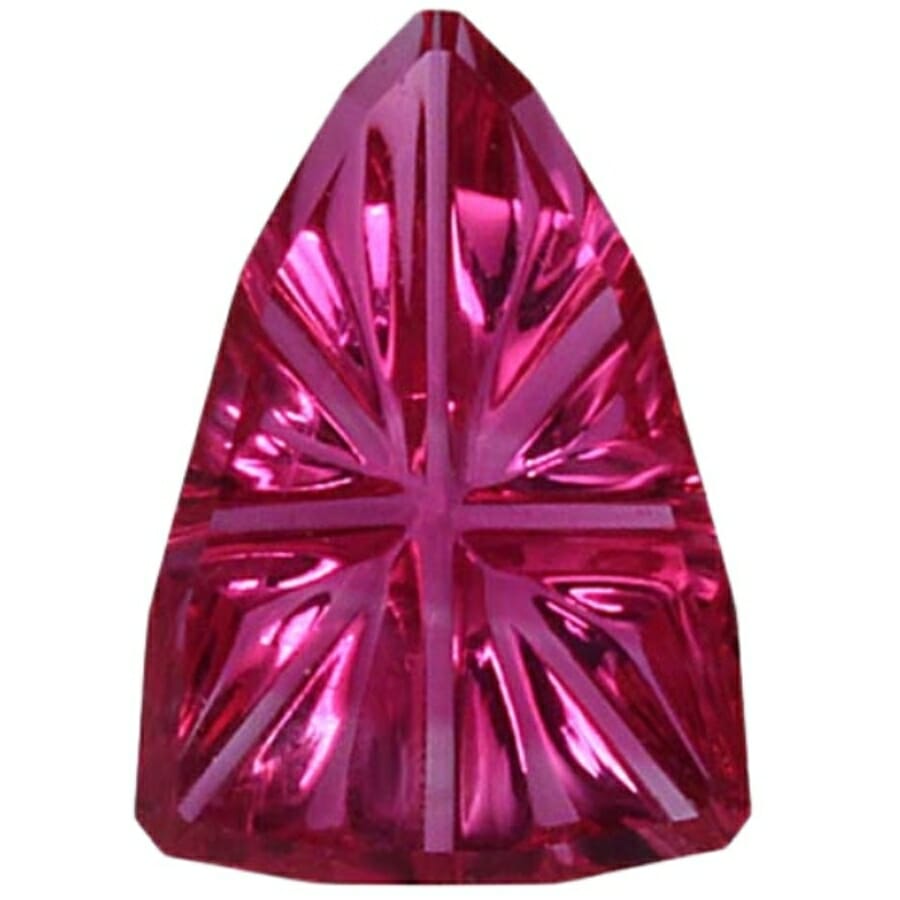
The ability of a material to let electricity or heat move through it is called its conductivity. Let’s compare it to a track for races.
On a smooth, fast race track, cars can move quickly. But cars move much more slowly on a bumpy, rough path. Regarding electricity and heat, red diamonds and rubies have different “race tracks.”
Red diamonds are like having a race track that is very smooth and fast. They are some of the best ways people have found to move heat. Heating one side of a red diamond will quickly move to the other side.
This is because of how the atoms in diamonds are set up. They make a pattern that makes it easy for heat to move through.
Electricity and heat don’t get along well with rubies, so they don’t let them pass through easily. They are more like the rough, bumpy track where things move slowly.
Rubies are insulators, which means they stop the flow of electricity instead of helping it. So, if you tried to send heat or electricity through a ruby, it would move much slower than a red diamond.
Density – Red Diamond has high density
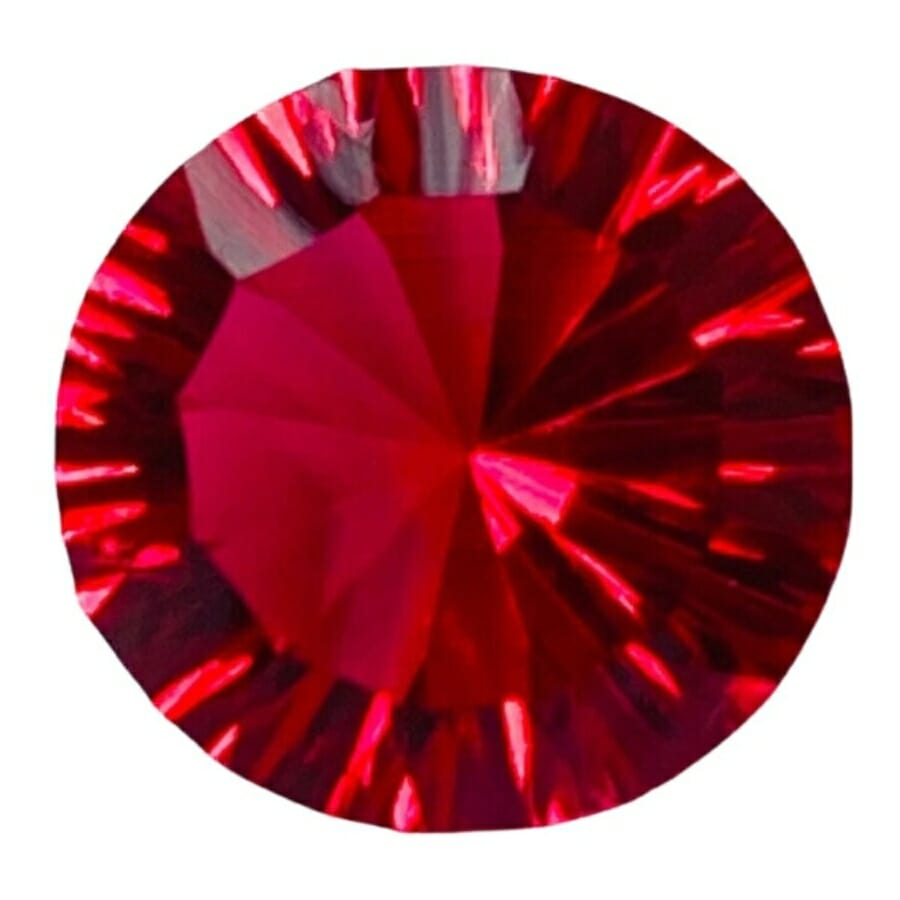
Density might sound like a big word, but it’s a simple concept. It’s like comparing a bag of cotton candy to a bag of marbles of the same size. The bag of marbles is denser because it has more stuff packed into it than the fluffy cotton candy. Now, let’s think of red diamonds and rubies similarly.
Red diamonds are like a bag of marbles; they have a high density. This is because they are made of carbon atoms packed close together in a tight pattern, like having a bag full of marbles where each marble is an atom. This tight packing makes red diamonds denser and very hard, which is why they are cherished.
Rubies are not as dense as red diamonds. In rubies, the atoms are not as close together. It’s more like our marbles in the bag are spread out a little more, which makes it less dense than the red diamond.
Even though rubies are made of a different material called aluminum oxide and chromium, which gives them their red color, the way the atoms are arranged makes them less dense.
Fluorescence – Rubies can exhibit strong fluorescence
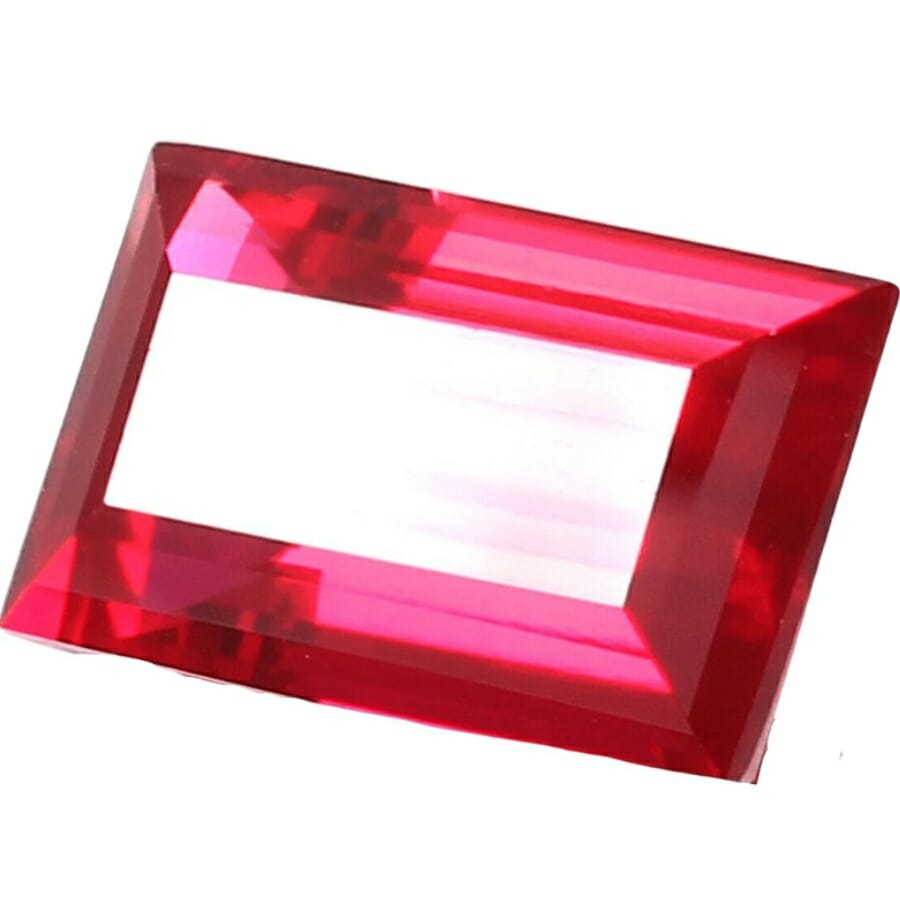
Fluorescence may sound like a big word, but it’s just a cool thing that some stones can do. When ultraviolet (UV) light from the sun or other sources hits these stones, they can glow in the dark.
When the lights go out, they have a little party and show off colors you can’t see when the lights are on.
Now, let’s talk about rubies and red diamonds. When it comes to fluorescence, rubies, and red diamonds react differently. Red diamonds can give off little flashes of light.
When UV light hits them, they might glow blue or even red. It looks like they are quietly having a glow party.
On the other hand, rubies are known for their beautiful show. They love to glow under UV light, and when they do, they look like they’re turning up the party lights by showing off a bright red color.
Under UV light, the chromium atoms in rubies light up like little glow lights, making the ruby bright red. This extra sparkle is often admired, making rubies look even more magical.
The difference between red diamonds and rubies fluoresce under UV light is how they act at a party. Red diamonds might only glow slightly, but rubies shine brightly and show off their unique red color.
Even in the dark, it’s one way that these two red gemstones show how different they are.
Hardness – Red Diamonds are among the hardest substances
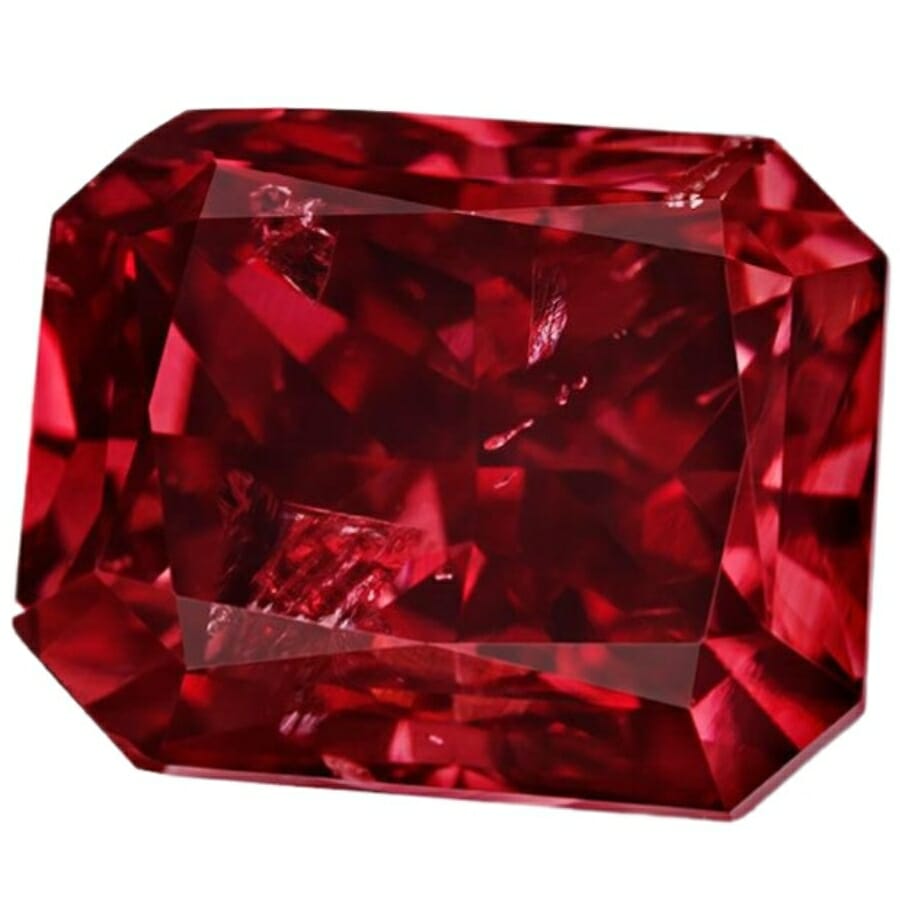
When it comes to gemstones, hardness is like how well they don’t get scratched or broken when they come into contact with other things. It’s like comparing a plastic toy to a metal one.
The metal toy is harder and isn’t scratched as easily as the plastic one. When we look at red diamonds and rubies, we can see their hardness is also different.
Red diamonds are champions when it comes to hardness. They are one of the hardest materials on Earth. On a scale that measures hardness, called the Mohs scale, red diamonds score a perfect 10.
This means they are super tough and can resist scratches well. It’s like having a superhero shield that hardly anything can scratch.
Rubies are not as hard as red diamonds, but still pretty hard. On the Mohs scale, they get a 9, which is great but imperfect, like the red diamonds. Rubies are like having a tough metal toy but aren’t as indestructible as the red diamond shield.
Because of this difference in hardness, cutting, polishing, and even wearing red diamonds and rubies as jewelry will be different. Since red diamonds are harder, they can stay in good shape for a long time and not get scratched or broken.
On the other hand, rubies, which are also hard, might get tiny scratches over time if they bump into harder things. This difference in hardness is just one more thing that sets these beautiful red gemstones apart. Each has its level of resistance to scratches and rough handling.
Location – Rubies have a broader geographical distribution
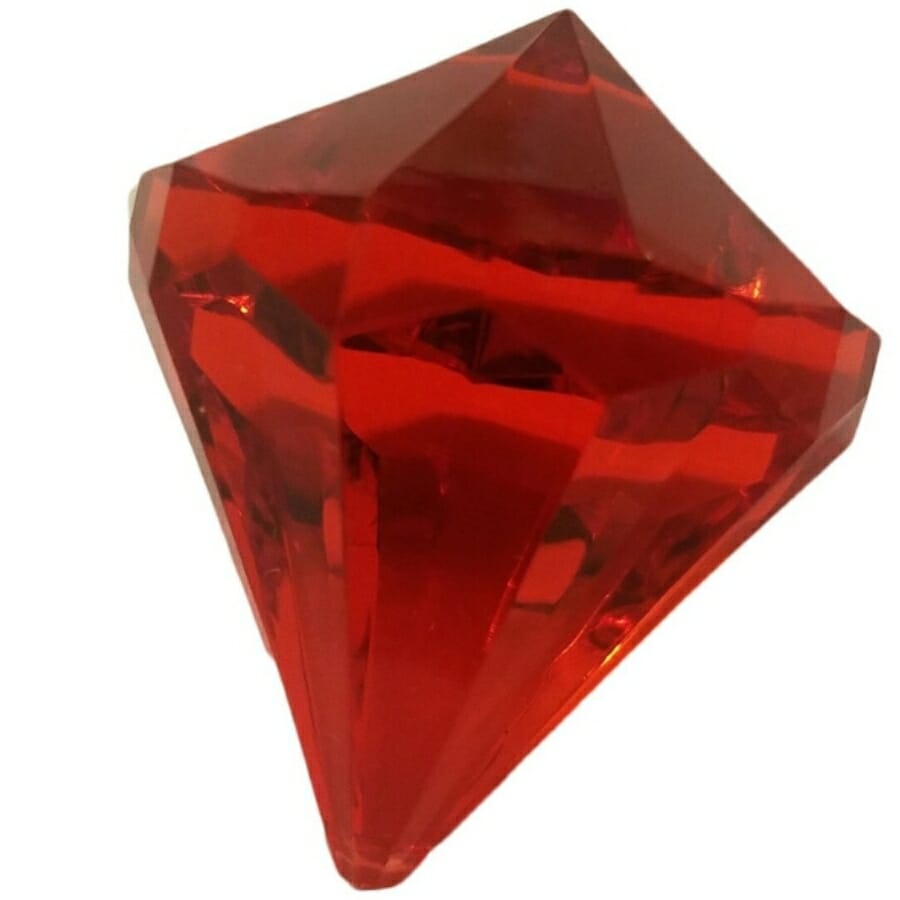
Red diamonds and rubies come from different places, like the gems. People must go to other parts of the world to find these beautiful stones.
Where these rocks are found can tell us about their geological history. Rockhounding is a popular hobby, and these are the most excellent rockhounding destinations where you can find red diamonds and rubies.
Red diamonds are like hidden treasures that are only found in a few places around the world. They are so rare that only a few places, like Brazil and Australia, have been lucky to find them under their land. Imagine having just a few special spots on a giant treasure map where X marks the spot for red diamonds!
Rubies can be found in more parts of the world. Myanmar, Sri Lanka, and Thailand are three countries that are known for their beautiful rubies. Over thousands of years, rubies have been made in these places because the land is just right.
Even though red diamonds and rubies can both be a beautiful shade of red, they come from very different places. Red diamonds are hard to find and are only found in a few places, while rubies are more common and can be found in more countries.
This difference in location is another reason why red diamonds are so rare and expensive and why rubies, which are still very valuable, are easier for people worldwide to find.
So, finding these red gems, whether rare red diamonds from faraway lands or more common rubies from exotic places, is an exciting journey. Check out our guide on how to find crystals near you to improve your chances of finding red diamonds or rubies.
Price – Red Diamonds are among the most expensive gemstones
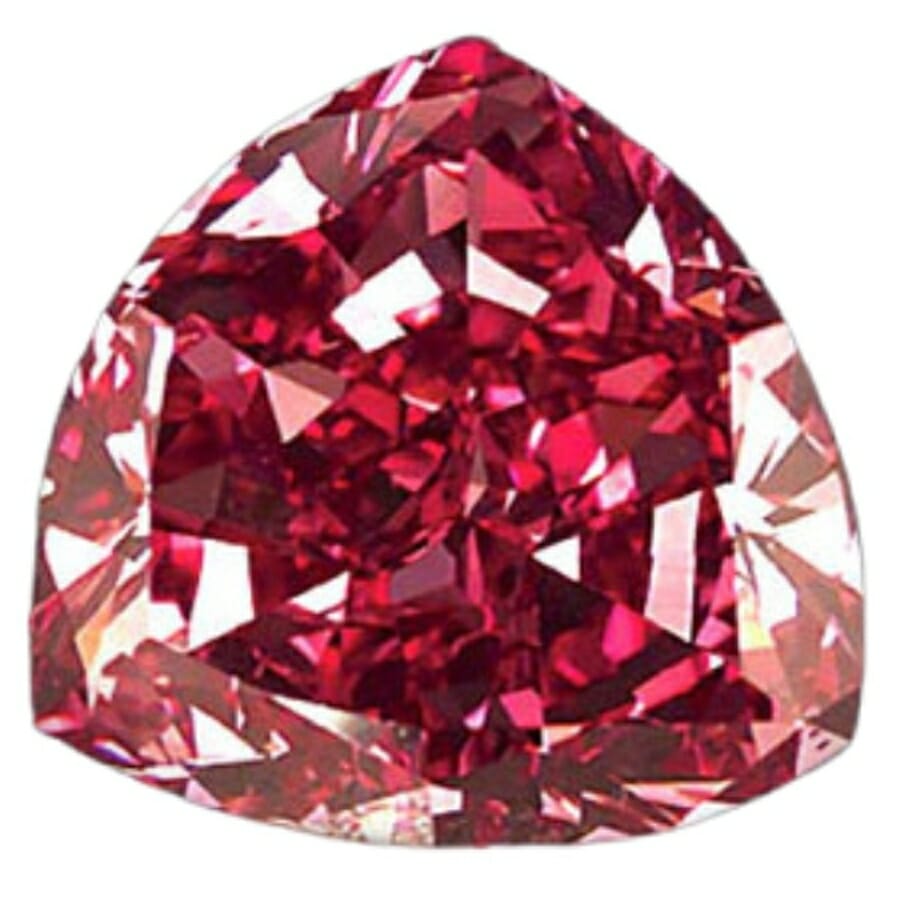
Regarding price, red diamonds and rubies are rare collector’s items and popular toys. Red diamonds are like the stars of the gem world because they are rare and beautiful.
They cost a lot of money, which can make anyone’s eyes pop out. Because they are so rare, even a small red diamond can cost a lot—sometimes even millions of dollars. It’s like having a rare, expensive toy that almost no one else has.
On the other hand, rubies are more like the popular toys that many kids have. They are beautiful and highly valued but not as rare as red diamonds. This makes them a lot cheaper.
You could buy a lovely ruby for thousands of dollars, which is still a lot but not nearly as much as a red diamond. Ruby prices vary greatly depending on their size and quality, so more people can dream of owning one someday.
The difference in price between red diamonds and rubies shows how unique and rare red diamonds are compared to rubies. It’s like the difference between owning a one-of-a-kind collector’s item and a popular, loved toy.
Both are unique and beautiful, but one is a dream for many people while the other is more of a reality. The high price of red diamonds shows that they are rare and hard to get, while the lower price of rubies makes it possible to own something beautiful without breaking the bank.
Ruby vs. Red Diamond – The Similarities
After discussing how different ruby and red diamond are, we’ll discuss how they’re the same. Although they have fewer similar characteristics than differences, it’s still vital to know this information about these minerals.
Appearance – Rubies and red diamonds have a translucent appearance
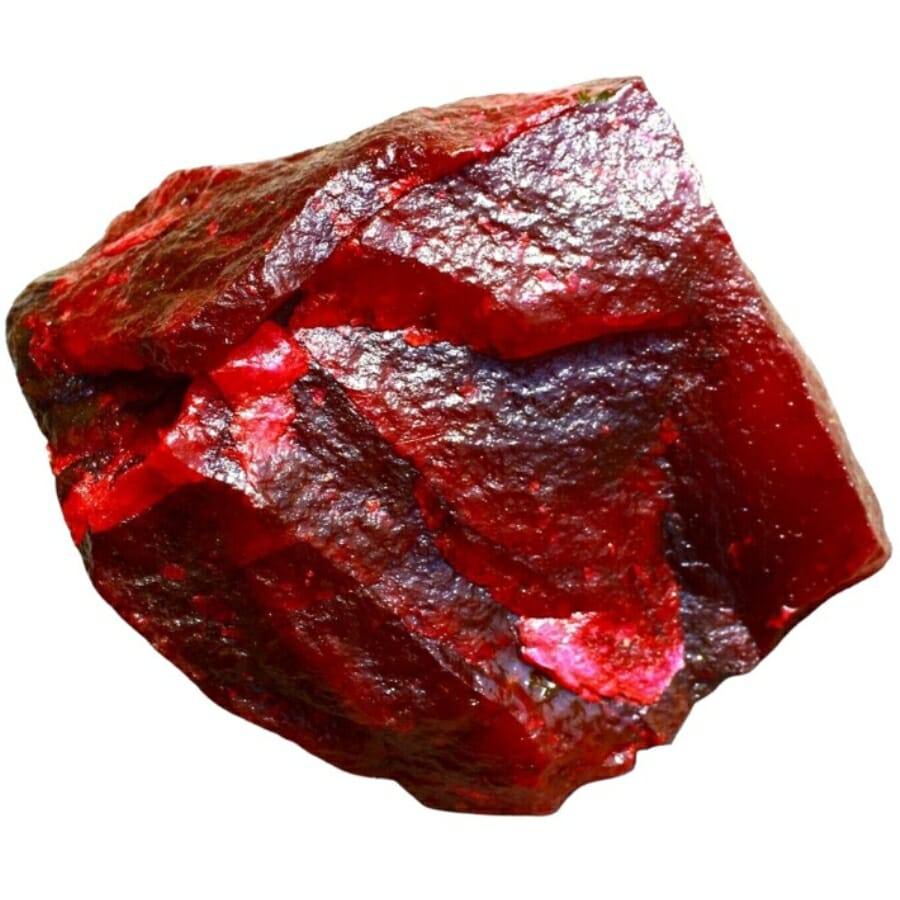
When you first look at a red diamond and a ruby, you might notice that they look alike in other ways besides their beautiful color. These gems can be cut and polished to shine like little stars on Earth.
When the light hits them, they sparkle beautifully and become the center of attention. It seems like they both like to shine and sparkle whenever they can.
Red diamonds and rubies can also look a lot alike in shape. Gem cutters can cut them into beautiful shapes like hearts, ovals, or even the classic round shape.
Because of this, they can be used for many different kinds of jewelry, such as rings, necklaces, and earrings. It’s like having a favorite outfit that you can change up for other occasions.
Also, high-quality red diamonds and rubies look clear and transparent, meaning you can see them right through a clear window. This makes it easy to see their inner worlds and how they play with light, creating a dance of reflections and refractions that draws the eye.
Even though they are different kinds of gems, red diamonds and rubies have some visual qualities that make them attractive to people who like pretty, sparkly things.
Color – Both red diamond and ruby have a range of red hues
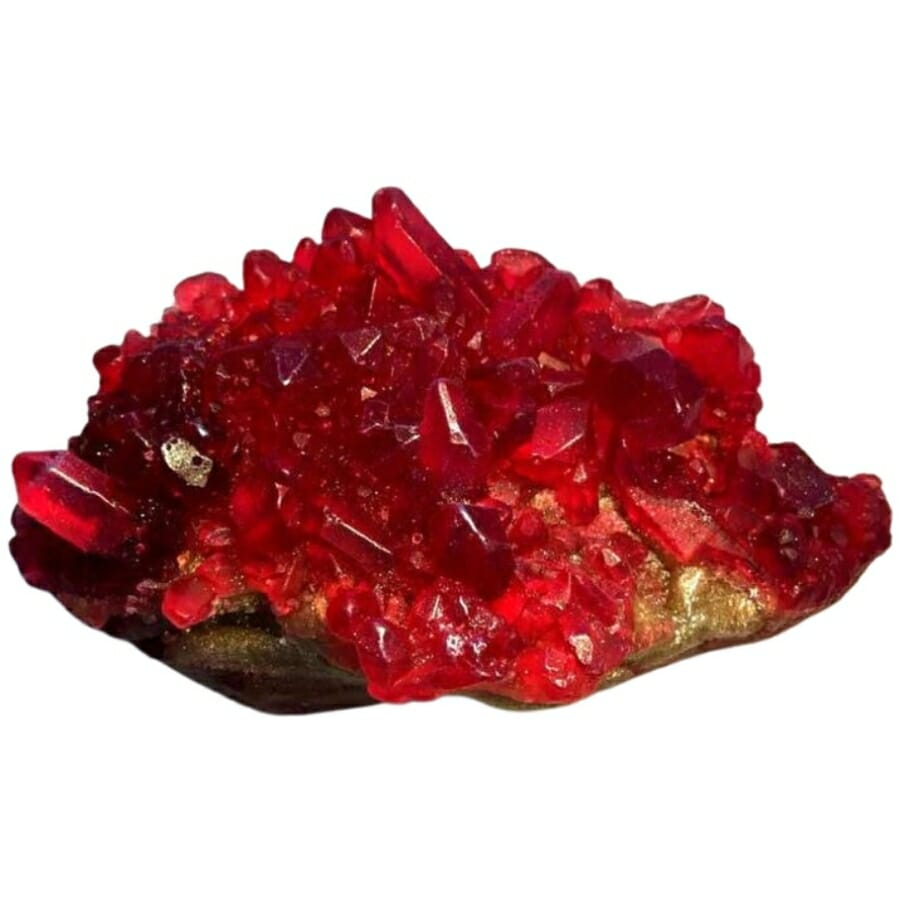
The magical world of gemstones holds a rainbow of colors, but when it comes to red, both red diamonds and rubies shine brightly in their unique ways.
They both wear red like a royal robe, showing off shades that remind you of a sunset or a rose. The red in these gems is bold and beautiful, making a statement that catches the eye.
The red diamonds and rubies can dance and play mesmerizingly when light hits them. People love to wear them as jewelry because they both have a way of making their red colors shine and sparkle. It looks like you’re wearing a piece of a rainbow that fell from the sky.
But even though they are both red, the red can be different shades. Red diamonds can be a rare and beautiful pure red, while rubies can be a deeper, more classic red that has been loved for centuries.
It’s like comparing a fiery red rose to a classic red apple. Both are red, but each has its shade that makes it stand out. Even though they are different in a few ways, the color red brings red diamonds and rubies together uniquely.
In the gem world, besides red diamonds and rubies, there are several red rocks, gem, and minerals that are just as interesting. They are like brothers and sisters in the big gemstone family. These are treasures in the world of gems because they can show off red beautifully.
Formation – Rubies and Red Diamonds form in high-pressure conditions
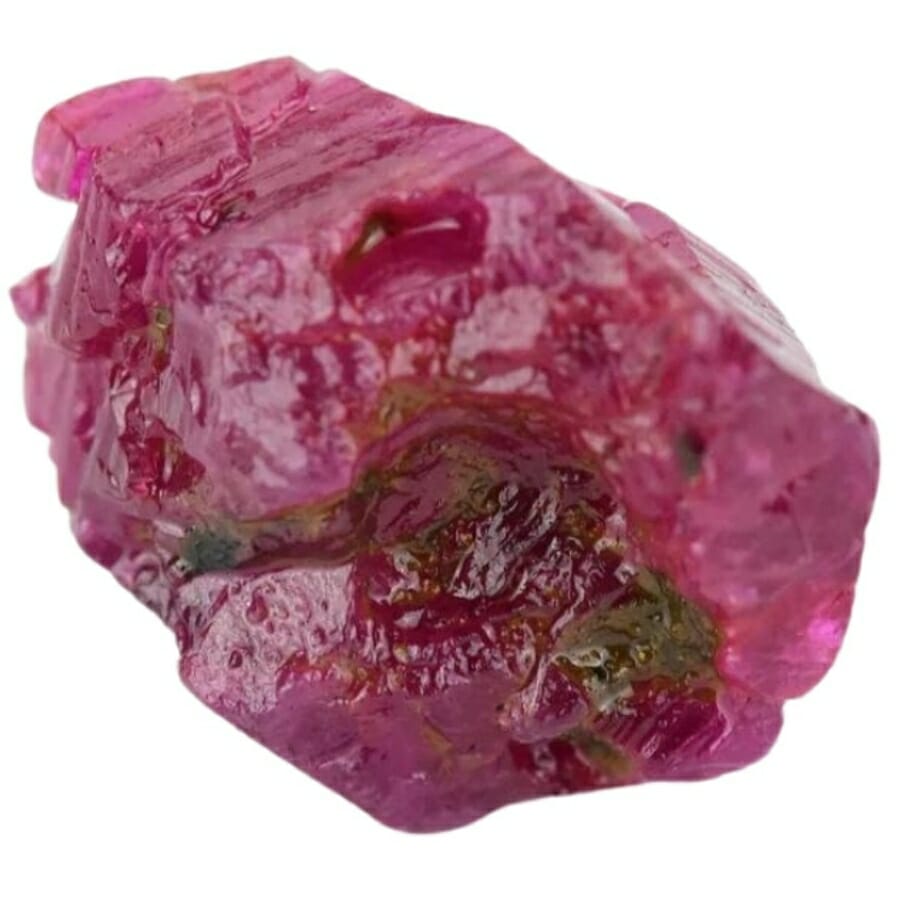
From deep inside the Earth to the sparkling gems we see, the journey of red diamonds and rubies is like a long, exciting story. These gems come from deep inside the Earth, where it is hot and the pressure is high. They seem to need a tough environment to grow into the beautiful gems they are.
Deep in the Earth, carbon atoms combine under much heat and pressure to form crystals, where red diamonds are made. Volcanic eruptions bring them closer to the surface over a long period, where they wait to be found.
Rubies are made when the minerals corundum and chromium mix with just the right amount of chromium in the Earth’s crust while it is hot and under pressure.
It’s the same exciting journey, but different friends join the group. Over time, as these materials cool down, the beautiful rubies form and wait to be found.
Even though the ingredients and recipes are different, both red diamonds and rubies go through a fantastic process of forming under high pressure and high temperatures deep in the Earth and being brought closer to the surface by natural processes.
They both had to fight through the harsh conditions of the underground world to become beautiful, sparkling treasures.
Magnetism – Neither Red Diamonds nor Rubies are magnetic
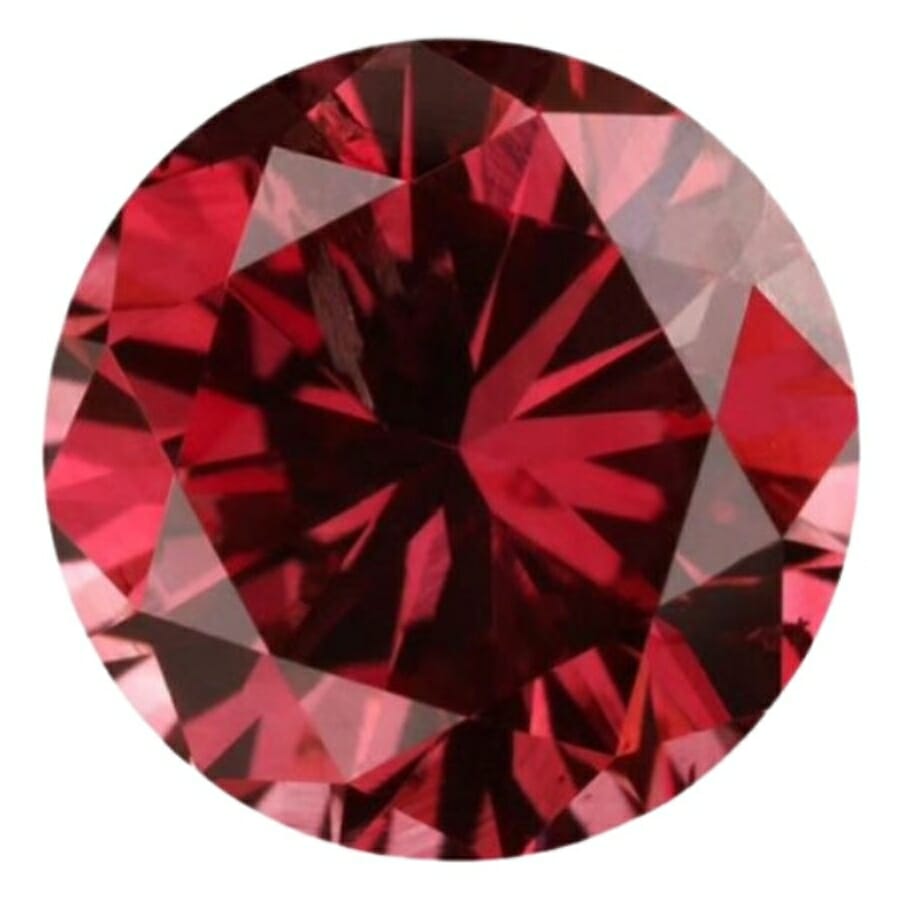
Gemstones can be full of surprises, and how they react to magnets is one of them. You might not think a bright red diamond or ruby has anything to do with magnets, but they do.
When it comes to magnetism, neither red diamonds nor rubies are attracted to magnets like a piece of iron would be. They have their own lives and don’t let magnets tell them what to do.
These gems have tiny particles inside that can interact in a certain way with magnetic fields. Scientists can learn a lot about the gemstones from this interaction, like how they are built and what they are made of.
But what’s cool is that even though they can interact in this special way with magnetic fields, they don’t stick to magnets or act like other magnetic things.
Both red diamonds and rubies have these incredible, independent attitudes towards magnetism. They may live in the fancy world of gemstones, but they don’t get clingy regarding magnets.
Their mysterious way of dealing with magnetism makes them even more fascinating. So, while they won’t jump onto a magnet, the story of magnetism in red diamonds and rubies is like a little side adventure that adds to the magic of these beautiful gems.
Streak – Both Rubies and Red Diamonds have a white streak
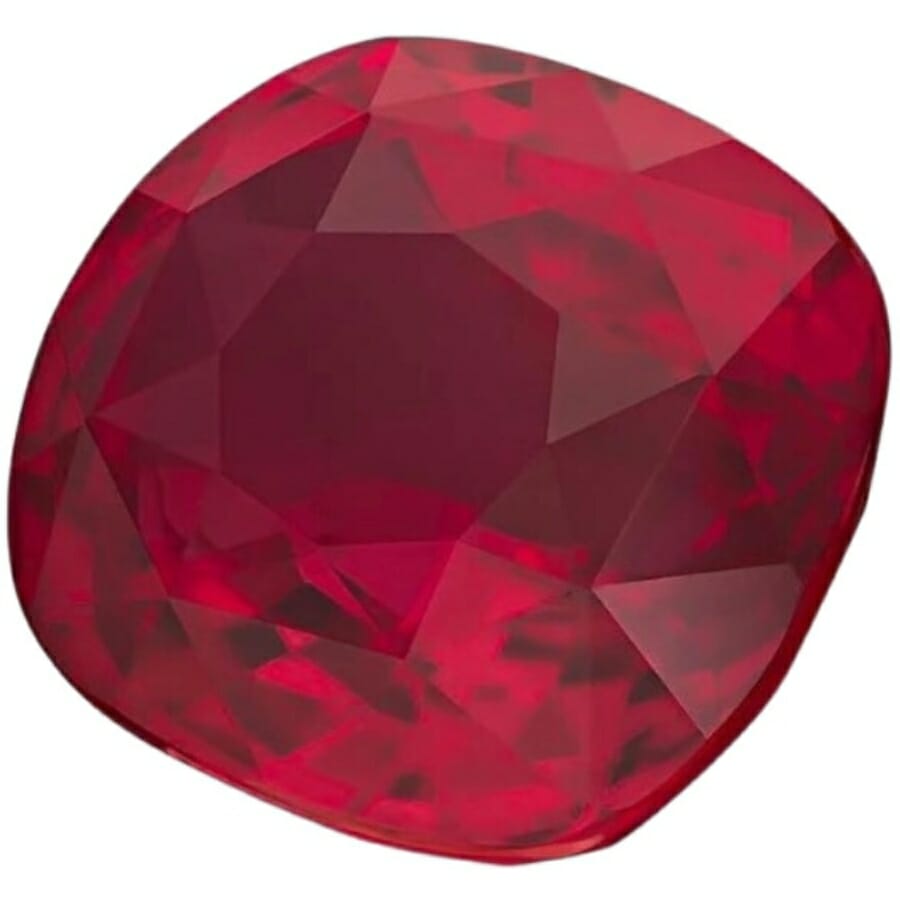
Streak is like the signature color a gem leaves behind when it’s rubbed against a rough surface. It’s a way to know more about the gem, like how we can learn about an animal from its tracks.
Now, red diamonds and rubies have a unique tale regarding streaks. Both rubies and red diamonds have streaks that are not as colorful as you might think. Even though their colors are deep and beautiful, the mark they leave is not red.
If you rub a red diamond on a rough surface, it leaves a white streak. It’s almost like the diamond is hiding its true color and showing a different side.
Rubies also leave a streak, but it’s not red. Instead, it’s white or colorless. These gems seem to have a quiet way of showing who they are without making a big deal about how beautiful their red color is. The white streak is like their humble signature, leaving a mark on the rough surface of where they’ve been.
This similarity in streak color shows that even though red diamonds and rubies look different and are made in different ways, they both have a small way of letting us know who they are. It’s like finding a hidden message in these gems that reminds us there’s always more to find than what’s on the surface.
The Easiest Ways To Tell Red Diamond and Ruby Apart
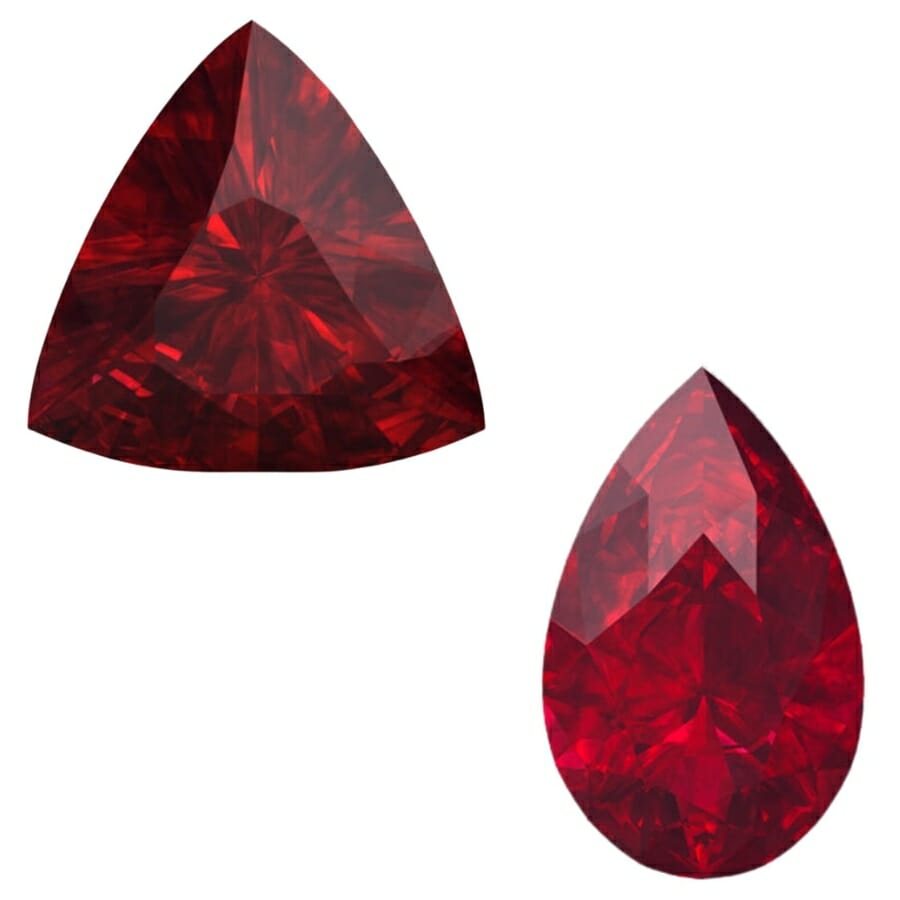
It can be easy to tell the difference between red diamond and ruby if you look at more than one characteristic. It’s fun to try to figure out what makes them different. Even though they have some things in common, you should watch out for a few key differences.
Look at how they sparkle in the light
Red diamonds are known for their sparkle, which makes them dance and play in the light in a way that can be mesmerizing.
Gem experts say they have a high level of “brilliance,” which measures how well a stone reflects light. When sunlight hits a red diamond, it can light up like a small red firework.
On the other hand, rubies have a softer shine. They are beautiful and classy but don’t shine as brightly as red diamonds.
Check for inclusions
High-quality red diamonds look like clear windows because they usually have few or no blemishes or inclusions, which are tiny flaws. Rubies, on the other hand, often have some things in them.
When the ruby is cut in a cabochon shape, these flaws can sometimes give the surface a silky shine or even star-shaped patterns (a smooth, rounded, and polished shape without facets).
Do a fun fog test
Because diamonds are good at moving heat, if you blow on a red diamond, the fog from your breath will disappear almost as soon as you do. But the fog will last a little longer if you breathe on a ruby.
You can become a gemstone detective by using a simple breath test to find clues about whether you are looking at a red diamond or a ruby.

